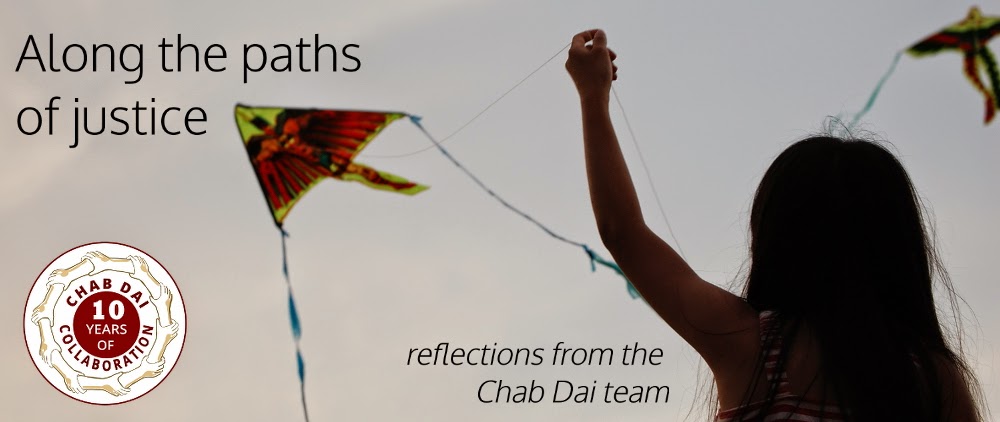Human Trafficking. These two words arranged together evoke such a gut wrenching jolt. The New Oxford American Dictionary defines “trafficking” as a verb, “a deal or trade in something illegal.” The trading of human beings? It just sounds awful. It is awful. But what is it exactly? We all think we know what human trafficking is. I myself once watched a documentary of creepy men wandering through dark alleyways of a slum looking for young girls. I thought that was trafficking. Oh, if it was only that simple…
The United Nations definition is:
Trafficking in persons "shall mean the recruitment, transportation, transfer, harbouring or receipt of persons, by means of the threat or use of force or other forms of coercion, of abduction, of fraud, of deception, of the abuse of power or of a position of vulnerability or of the giving or receiving of payments or benefits to achieve the consent of a person having control over another person, for the purpose of exploitation. Exploitation shall include, at a minimum, the exploitation of the prostitution of others or other forms of sexual exploitation, forced labour or services, slavery or practices similar to slavery, servitude or the removal of organs;
(b) The consent of a victim of trafficking in persons to the intended exploitation set forth in subparagraph (a) of this article shall be irrelevant where any of the means set forth in subparagraph (a) have been used;
(c) The recruitment, transportation, transfer, harbouring or receipt of a child for the purpose of exploitation shall be considered "trafficking in persons" even if this does not involve any of the means set forth in subparagraph (a) of this article;
(d) "Child" shall mean any person under eighteen years of age.
(b) The consent of a victim of trafficking in persons to the intended exploitation set forth in subparagraph (a) of this article shall be irrelevant where any of the means set forth in subparagraph (a) have been used;
(c) The recruitment, transportation, transfer, harbouring or receipt of a child for the purpose of exploitation shall be considered "trafficking in persons" even if this does not involve any of the means set forth in subparagraph (a) of this article;
(d) "Child" shall mean any person under eighteen years of age.
Protocol to prevent, suppress, and punish trafficking in persons, especially women and children, supplementing the United Nations Convention against Transnational Organised Crime
Well, sadly, according to this definition, we all have probably seen a form of human trafficking. It is not confined to a certain part of the world nor does it discriminate between races. It may be occurring in your neighborhood or it may be happening on the other side of the world.
It bothers me to think that I may have seen someone trafficked and had done nothing because I did not fully understand the situation. We often see trafficking as this mythical beast in a far away land. Our media has shaped our minds on what trafficking is. If only everyone understood the actual definition.
A while back while I was traveling, due to unfortunate events, I was stranded at a bus station. While trying to figure out what my next move was I noticed an odd pairing of what I thought was a date. The female was significantly younger than the male. They were different races and the male had given the female some money to buy food in the empty bus station’s food court. She didn’t appear to look distressed.
Yeah it looked weird. But who was I to judge? I got embarrassed for questioning why they were in each others' company. Maybe they were just really good friends. I told myself to forget it. I was by myself; what could I do? I had my own problems to worry about (being lost in another country and all). But thinking back, there was clearly something off about that situation. I forgot all about it, but after I started learning more about what human trafficking actually is this memory jumped back to my attention.
The definition of human trafficking needs to be well-established in all of our minds. Understanding the difference between force and coercion should be common knowledge. This would allow a case of trafficking to be detected sooner than later.
We get so involved in our own lives that we do not think twice. Sometimes subconsciously we realize that something may be wrong, but we are too afraid to think a situation is something other that it appears because we don't want to look stupid. But in the meantime that little voice in your head is screaming otherwise. A deep understanding of what human trafficking is can be the tipping point of someone reporting a case versus just walking away. We as human beings have that gut instinct. We all need to trust it. But too often we fear disturbing the norm and do not listen. I myself am guilty of that because I always give anyone and everyone the benefit of the doubt.
So how does one counter the human trafficking issue? First, by getting educated on what human trafficking is. Then, by learning of all of the resources available. If ever you run across an odd circumstance, you will know how to properly address the situation and who to report it to. The worst case scenario is that you are wrong and look sheepishly dumb. But it is better to over analyze than to overlook.



